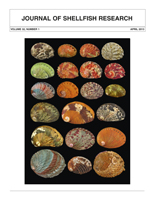Population declines of pink (Haliotis corrugata) and green (Haliotis fulgens) abalone in southern California forced the closure of the fisheries in 1995. Overfishing was the main factor contributing to decreasing landings, and in 2004 both pink and green abalone were identified as species of concern. Translocation of adults, moving solitary abalone together to create dense aggregations, is one of the strategies that has been proposed to overcome Allee effects and to enhance spawning success and recovery. Pink (n = 35) and green (n = 113) abalone were tagged and translocated to recovery sites with preexisting pink (n = 13) and green (n = 26) abalone. Translocation and preexisting abalone were tagged and monitored to determine their long-term survival, persistence at the site, and movement at 2 islands in southern California. The mortality associated with the tagging and translocations was low (<5%) including 1 dead pink abalone and 5 dead green abalone. The density of translocated pink abalone at 2 sites remained fairly stable, decreasing slightly from 0.84 abalone/m2 to 0.72 abalone/m2 after 391 days and 0.56 abalone/m2 to 0.44 abalone/m2 after 133 days. In contrast, translocated green abalone densities at 2 sites decreased dramatically from 0.51 abalone/m2 to 0.08 abalone/m2 after 405 days and 0.62 abalone/m2 to 0.01 abalone/m2 after 388 days. Pink abalone persistence was high and immigration was rare, whereas green abalone persistence was low and immigration into the sites was common. We find that pink abalone are optimal candidates for translocation given their high rate of site fidelity, but green abalone are not. Furthermore, our results demonstrate how important species-specific behaviors are to the success of translocation efforts, supporting the use of pilot studies prior to implementation of large-scale translocation recovery actions.
How to translate text using browser tools
1 April 2013
Testing Translocation as a Recovery Tool for Pink (Haliotis corrugata) and Green (Haliotis fulgens) Abalone in Southern California
Ian K. Taniguchi,
Derek Stein,
Kai Lampson,
Laura Rogers-Bennett
ACCESS THE FULL ARTICLE

Journal of Shellfish Research
Vol. 32 • No. 1
April 2013
Vol. 32 • No. 1
April 2013
Abalone
aggregation
Allee effects
conservation
enhancement
Haliotis corrugata
Haliotis fulgens




